Affiliate links on Android Authority may earn us a commission. Learn more.
Google Pixel 8 and Pixel 8 Pro: Release date, price, colors, everything else!
Published onAugust 14, 2024
After an extensive rumor period, the Google Pixel 8 and Pixel 8 Pro were finally launched in late 2023. Although they’re no longer Google’s top devices, they remain among the best Android phones, featuring the search giant’s best cameras, best processor, and more.
This article has everything you need to know about the latest flagship Pixels. Let’s jump in!
Google Pixel 8: Release date, price, and availability
- Google Pixel 8 (128GB): $699 / €799 / £699
- Google Pixel 8 Pro (128GB): $999 / €1,099 / £999
Google officially launched the Pixel 8 and Pixel 8 Pro on October 4, 2023. At its annual Made by Google event in New York City, the company announced the phones and a new smartwatch: the Google Pixel Watch 2.
On May 7, 2024, Google added a third member to the Pixel 8 series: the mid-range Pixel 8a. The phone offers many of the same features found on the proper Pixel 8 line, including the Tensor G3 SoC and a seven-year update promise. However, it does come in at a lower price and skimps on some features to get there.
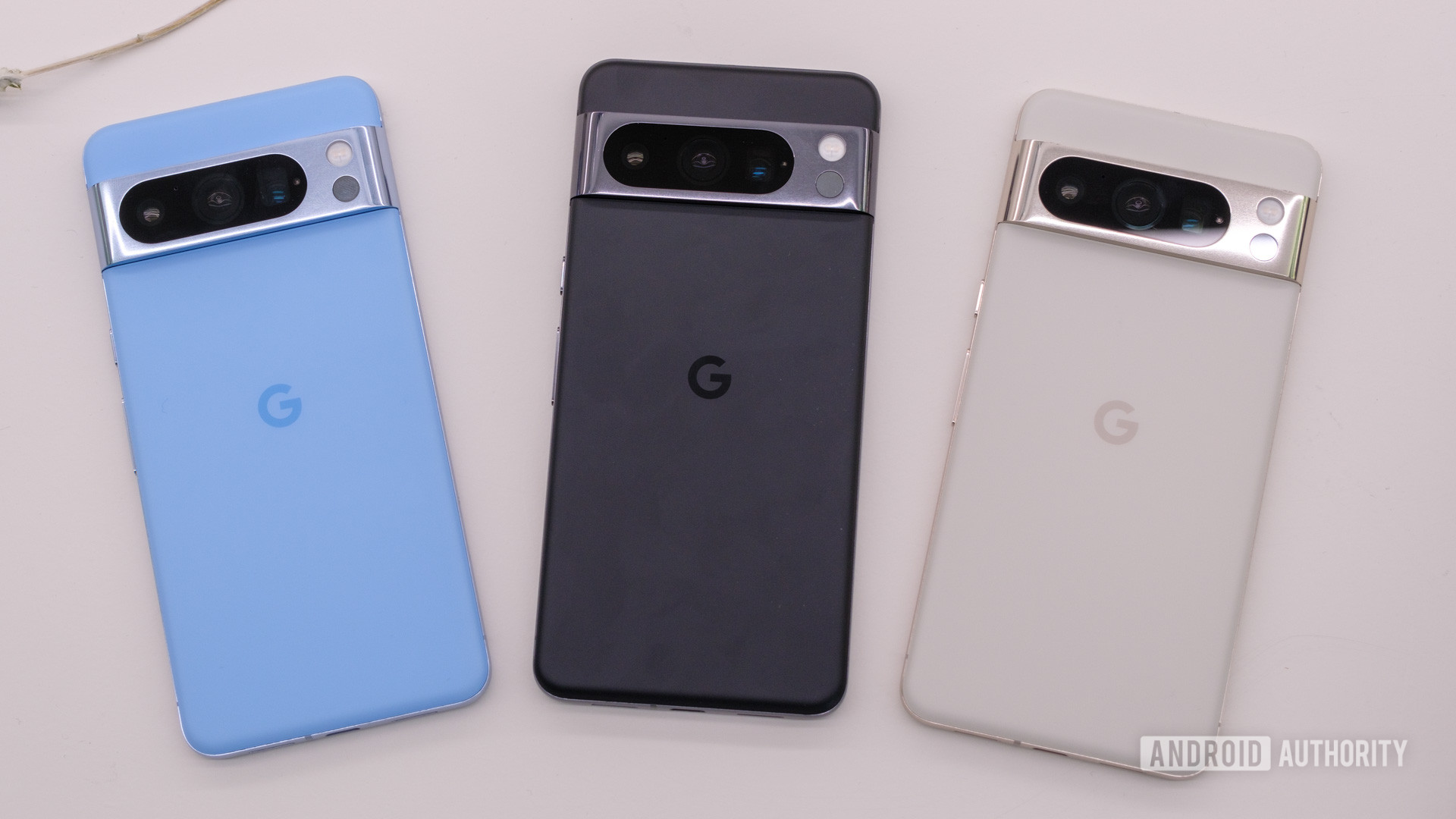
For the first time since 2021, Google increased the prices of the Pixel 8 series in the United States. Previously, the Pixel 6 and Pixel 7 landed at $599, and the Pixel 6 Pro and Pixel 7 Pro landed at $899. That consistency in pricing is no more, as the 128GB model of the Google Pixel 8 costs $699, and the Google Pixel 8 Pro’s 128GB variant costs $999.
This $100 increase wasn’t unexpected, but any price increase is still a bit disappointing. That $599 price for the Pixel 6 and Pixel 7 was especially fantastic, but $699 remains a pretty great deal. Notably, this undercuts the Samsung Galaxy S24 by $100 but overcuts the Galaxy S23 FE.
As for the larger storage models, below is how it all breaks down. Note that all Pixel 8 models come with 8GB RAM and all Pixel 8 Pro variants come with 12GB RAM.
- Pixel 8 (128GB): $699
- Pixel 8 (256GB): $759
- Pixel 8 Pro (128GB): $999
- Pixel 8 Pro (256GB): $1,059
- Pixel 8 Pro (512GB): $1,179
- Pixel 8 Pro (1TB): $1,399
The Pixel 8 series is available in all the usual areas we see Pixel phones. That includes the United States (including Puerto Rico), Canada, the United Kingdom, Ireland, Austria, Denmark, France, Germany, Italy, the Netherlands, Norway, Portugal, Spain, Switzerland, Sweden, Japan, Taiwan, India, Singapore, and Australia.
You might be able to find the Pixel 8 for much less in certain countries, especially now that the newer Pixel 9 series is available. If you purchase the phones through some carriers, you might even be able to get one for free. A host of trade-in options are also available.
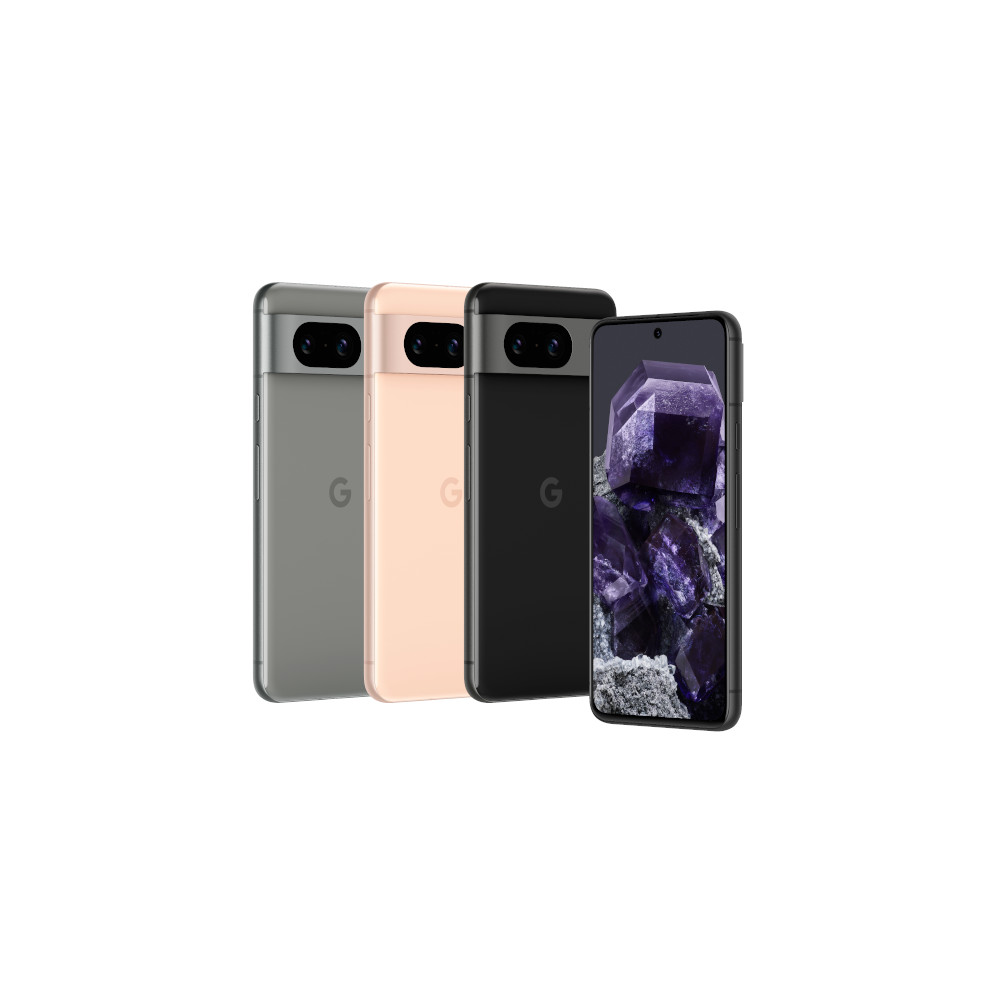

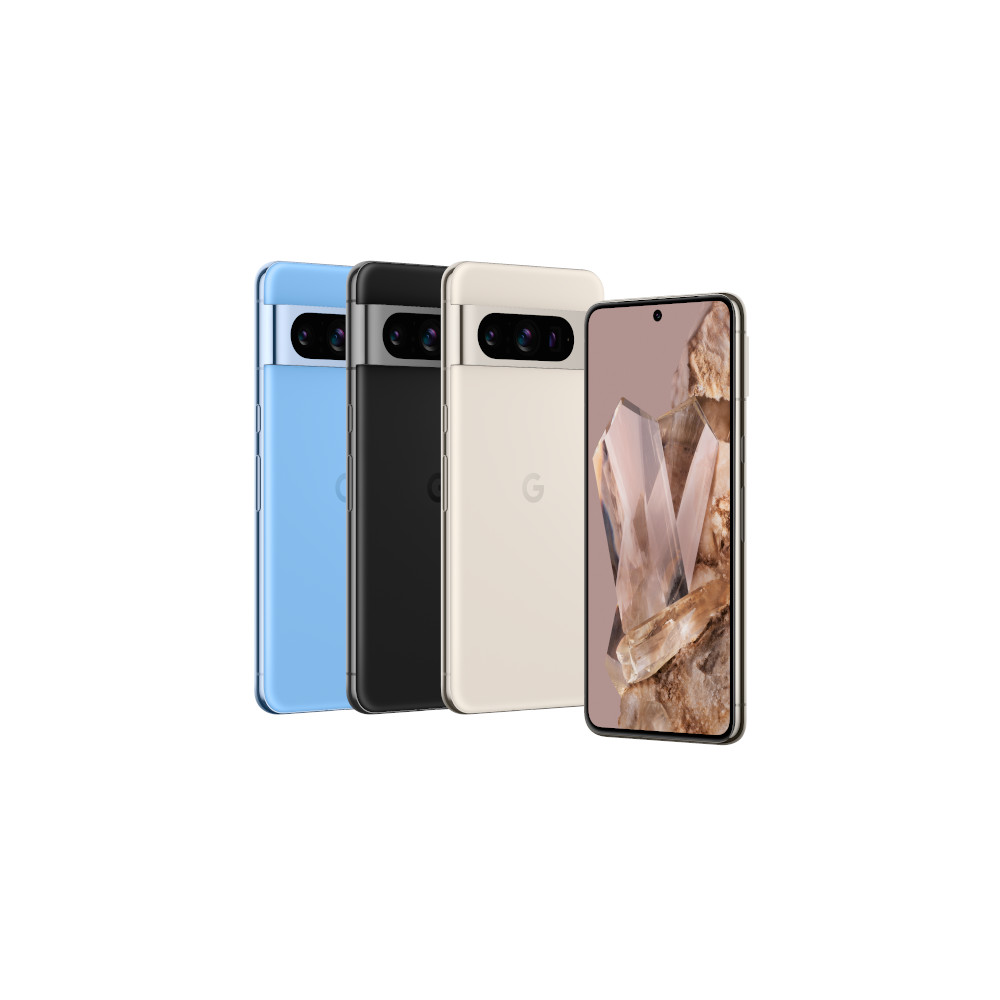



Google Pixel 8: Specs
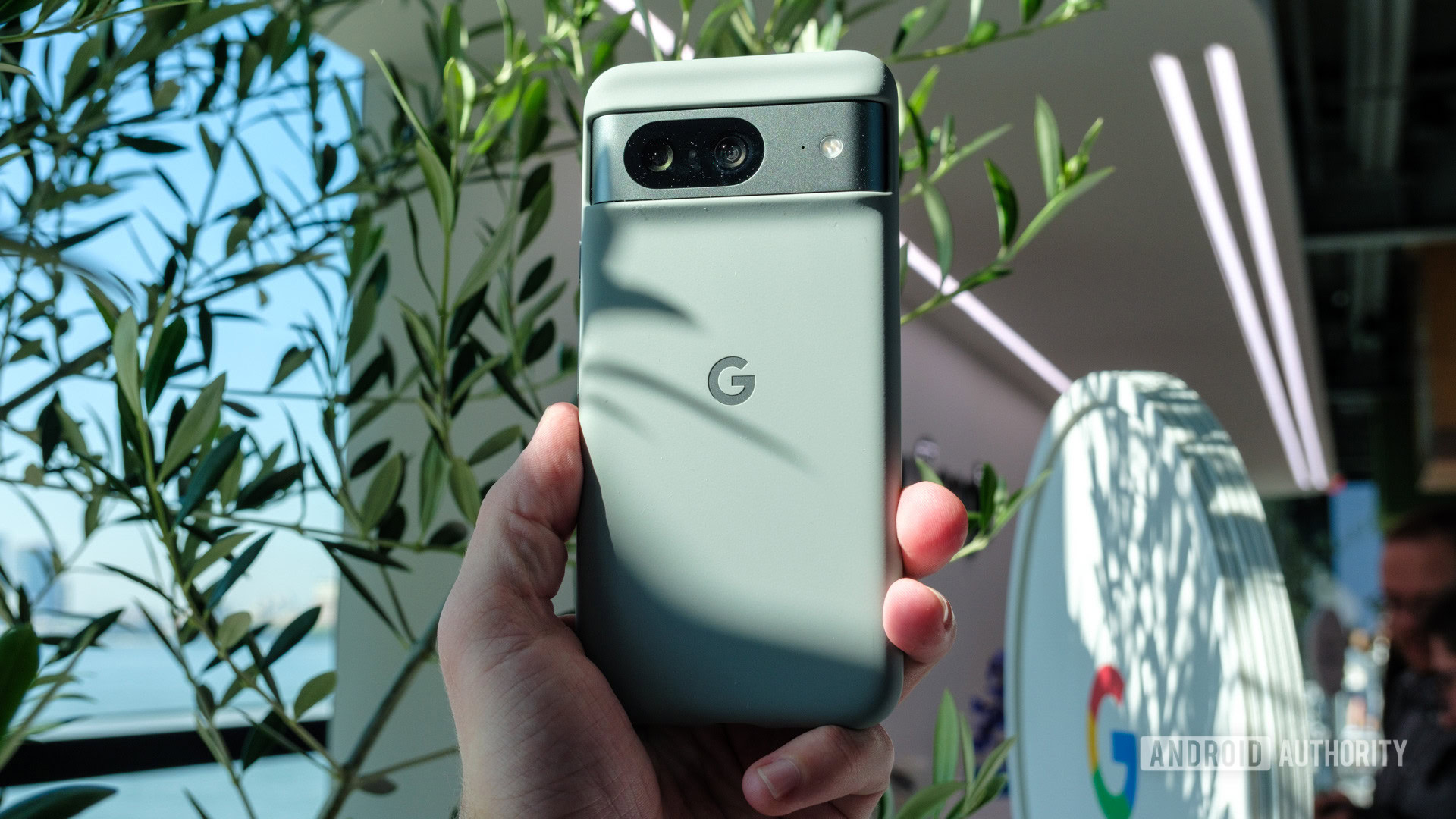
As one would expect, the hardware inside the Pixel 8 series is superior to what we saw in the Pixel 7 series. The cameras, processor, displays, batteries, charging speeds, and more are all better when comparing the Pixel 7 vs the Pixel 8. As usual, the Pixel 8 Pro is superior to the Pixel 8 in multiple respects. To make those differences clear, we have the complete list of Google Pixel 8 and Pixel 8 Pro specs side-by-side below.
| Google Pixel 8 | Google Pixel 8 Pro | |
|---|---|---|
Display | Google Pixel 8 6.2-inch OLED 2,400 x 1,080 resolution 428ppi 20:9 aspect ratio 60-120Hz refresh rate 1,400 nits brightness (HDR) 2,000 nits brightness (peak) HDR support Gorilla Glass Victus | Google Pixel 8 Pro 6.7-inch LTPO OLED 2,992 x 1,344 resolution 489ppi 20:9 aspect ratio 1-120Hz refresh rate 1,600 nits brightness (HDR) 2,400 nits brightness (peak) HDR support Gorilla Glass Victus 2 |
Processor | Google Pixel 8 Google Tensor G3 | Google Pixel 8 Pro Google Tensor G3 |
RAM | Google Pixel 8 8GB LPDDR5X | Google Pixel 8 Pro 12GB LPDDR5X |
Storage | Google Pixel 8 128 or 256GB UFS 3.1 | Google Pixel 8 Pro US: - 128, 256, or 512GB, or 1TB - UFS 3.1 Outside US: - 128, 256, or 512GB - UFS 3.1 |
Power | Google Pixel 8 4,575mAh (typical) 27W wired charging (USB-PD 3.0 PPS) Qi wireless charging | Google Pixel 8 Pro 5,050mAh (typical) 30W wired charging (USB-PD 3.0 PPS) Qi wireless charging |
Cameras | Google Pixel 8 Rear: - 50MP wide (1.2μm pixel width, ƒ/1.68 aperture, 82-degree FoV, 1/1.31-inch sensor, AF, OIS, EIS) - 12MP ultrawide (1.25μm pixel width, ƒ/2.2 aperture, 125.8-degree FoV, AF) - Single-zone laser-detect auto-focus (LDAF) sensor Front: - 10.5MP (1.22μm pixel width, ƒ/2.2 aperture, 95-degree FoV, FF) Camera app does not have pro controls | Google Pixel 8 Pro Rear: - 50MP wide (1.2μm pixel width, ƒ/1.68 aperture, 82-degree FoV, 1/1.31-inch sensor, AF, OIS, EIS) - 48MP ultrawide (0.8μm pixel width, ƒ/1.95 aperture, 125.5-degree FoV, AF) - 48MP telephoto (0.7μm pixel width, ƒ/2.8 aperture, 21.8-degree FoV, 5x optical zoom, OIS, EIS) - Multi-zone laser-detect auto-focus (LDAF) sensor Front: - 10.5MP (1.22μm pixel width, ƒ/2.2 aperture, 95-degree FoV, AF) Camera app has pro controls |
Dimensions and weight | Google Pixel 8 150.5 x 70.8 x 8.9mm 187g | Google Pixel 8 Pro 162.6 x 76.5 x 8.8mm 213g |
Hardware extras | Google Pixel 8 N/A | Google Pixel 8 Pro Temperature sensor |
Video | Google Pixel 8 Rear: 4K (24, 30, or 60fps) 1080p (24, 30, or 60fps) Front: 4K (24, 30, or 60fps) Supports: Macro Focus Video, 10-bit HDR, Cinematic Blur/Pan, Slo-Mo up to 240fps, 4K timelapse, Astrophotography timelapse, OIS, digital zoom up to 7x, HEVC (H.265), AVC (H.264) | Google Pixel 8 Pro Rear: 4K (24, 30, or 60fps) 1080p (24, 30, or 60fps) Front: 4K (24, 30, or 60fps) Supports: Video Boost, Night Sight Video, Macro Focus Video, 10-bit HDR, Cinematic Blur/Pan, Slo-Mo up to 240fps, 4K timelapse, Astrophotography timelapse, OIS, digital zoom up to 20x, HEVC (H.265), AVC (H.264) |
Audio | Google Pixel 8 Stereo speakers Triple-microphone Spatial audio support | Google Pixel 8 Pro Stereo speakers Triple-microphone Spatial audio support |
Ports | Google Pixel 8 USB-C 3.2 Dual-SIM (1x nano SIM and 1x eSIM) | Google Pixel 8 Pro USB-C 3.2 Dual-SIM (1x nano SIM and 1x eSIM) |
Security | Google Pixel 8 Titan M2 security chip Under-display fingerprint sensor Face Unlock (Class 3, highest tier) | Google Pixel 8 Pro Titan M2 security chip Under-display fingerprint sensor Face Unlock (Class 3, highest tier) |
Durability | Google Pixel 8 Gorilla Glass Victus (front and back) IP68 rating | Google Pixel 8 Pro Gorilla Glass Victus 2 (front and back) IP68 rating |
Connectivity | Google Pixel 8 US (PR), CA, UK, EU, AU: - Wi-Fi 7 (802.11be) with 2.4GHz, 5GHz, 6GHz - 2x2+2x2 MIMO - NFC - Bluetooth 5.3 JP: - Wi-Fi 6E (802.11ax) with 2.4GHz, 5GHz, 6GHz - 2x2+2x2 MIMO - NFC - Bluetooth 5.3 TW, SG, IN: - Wi-Fi 6 (802.11ax) with 2.4GHz, 5GHz - HE160 MIMO - NFC - Bluetooth 5.3 | Google Pixel 8 Pro US (PR), CA, UK, EU, AU: - Wi-Fi 7 (802.11be) with 2.4GHz, 5GHz, 6GHz - 2x2+2x2 MIMO - NFC - Bluetooth 5.3 - UWB JP: - Wi-Fi 6E (802.11ax) with 2.4GHz, 5GHz, 6GHz - 2x2+2x2 MIMO - NFC - Bluetooth 5.3 - UWB TW, SG, IN: - Wi-Fi 6 (802.11ax) with 2.4GHz, 5GHz - HE160 MIMO - NFC - Bluetooth 5.3 - UWB |
Network | Google Pixel 8 Model G9BQD (US and CA) - GSM/EDGE: Quad-band (850, 900, 1800, 1900MHz) - UMTS/HSPA+/HSDPA: Bands 1, 2, 4, 5, 6, 8, 19 - LTE: Bands B1 / 2 / 3 / 4 / 5/ 7 / 8 / 12 / 13 / 14 / 17 / 18 / 19 / 20 / 25 / 26 / 28 / 29 / 30 / 38 / 40 / 41 / 46 / 48 / 66 / 71 - 5G Sub-6: Bands n1 / 2 / 3 / 5 / 7 / 8 / 12 / 20 / 25 / 26 / 28 / 29 / 30 / 38 / 40 / 41 / 48 / 66 / 70 / 71 / 77 / 78 Model GKWS622 (US and CA): - GSM/EDGE: Quad-band (850, 900, 1800, 1900MHz) - UMTS/HSPA+/HSDPA: Bands 1, 2, 4, 5, 6, 8, 19 - LTE: Bands B1 / 2 / 3 / 4 / 5 / 7 / 8 / 12 / 13 / 14 / 17 / 18 / 19 / 20 / 25 / 26 / 28 / 29 / 30 / 38 / 40 / 41 / 46 / 48 / 66 / 71 - 5G Sub-6: Bands n1 / 2 / 3 / 5 / 7 / 8 / 12 / 20 / 25 / 26 / 28 / 29 / 30 / 38 / 40 / 41 / 48 / 66 / 70 / 71 / 77 / 78 - 5G mmWave: Bands n258 / 260 / 261 Model GZPFO (JP): - GSM/EDGE: Quad-band (850, 900, 1800, 1900MHz) - UMTS/HSPA+/HSDPA: Bands 1, 2, 4, 5, 6, 8, 19 - LTE: Bands B1 / 2 / 3 / 4 / 5 / 7 / 8 / 12 / 13 / 14 / 17 / 18 / 19 / 20 / 21 / 25 / 26 / 28 / 30 / 32 / 38 / 39 / 40 / 41 / 42 / 46 / 48 / 66 / 71 - 5G Sub-6: Bands n1 / 2 / 3 / 5 / 7 / 8 / 12 / 20 / 25 / 28 / 30 / 38 / 40 / 41 / 66 / 71 / 75 / 76 / 77 / 78 / 79 - FeliCa Model GPJ41 (All other countries): - GSM/EDGE: Quad-band (850, 900, 1800, 1900MHz) - UMTS/HSPA+/HSDPA: Bands 1, 2, 4, 5, 6, 8, 19 - LTE: Bands B1 / 2 / 3 / 4 / 5 / 7 / 8 / 12 / 13 / 14 / 17 / 18 / 19 / 20 / 25 / 26 / 28 / 30 / 32 / 38 / 40 / 41 / 42 / 46 / 48 / 66 / 71 - 5G Sub-6: Bands n1 / 2 / 3 / 5 / 7 / 8 / 12 / 20 / 25 / 26 / 28 / 30 / 38 / 40 / 41 / 66 / 71 / 75 / 76 / 77 / 78 | Google Pixel 8 Pro Model GC3VE (All countries except JP): - GSM/EDGE: Quad-band (850, 900, 1800, 1900MHz) - UMTS/HSPA+/HSDPA: Bands 1, 2, 4, 5, 6, 8, 19 - LTE: Bands B1 / 2 / 3 / 4 / 5 / 7 / 8 / 12 / 13 / 14 / 17 / 18 / 19 / 20 / 25 / 26 / 28 / 30 / 32 / 38 / 40 / 41 / 42 / 46 / 48 / 66 / 71 - 5G Sub-6: Bands n1 / 2 / 3 / 5 / 7 / 8 / 12 / 20 / 25 / 28 / 30 / 38 / 40 / 41 / 66 / 71 / 75 / 76 / 77 / 78 Model G1MNW (All countries except JP): - GSM/EDGE: Quad-band (850, 900, 1800, 1900MHz) - UMTS/HSPA+/HSDPA: Bands 1,2,4,5,6,8,19 - LTE: Bands B1 / 2 / 3 / 4 / 5 / 7 / 8 / 12 / 13 / 14 / 17 / 18 / 19 / 20 / 25 / 26 / 28 / 29 / 30 / 38 / 39 / 40 / 41 / 46 / 48 / 66 / 71 - 5G Sub-6: Bands n1 / 2 / 3 / 5 / 7 / 8 / 12 / 20 / 25 / 26 / 28 / 29 / 30 / 38 / 40 / 41 / 48 / 66 / 70 / 71 / 77 / 78 - 5G mmWave: Bands n257 / 258 / 260 / 261 Model GE9DP (JP): - GSM/EDGE: Quad-band (850, 900, 1800, 1900MHz) - UMTS/HSPA+/HSDPA: Bands 1, 2, 4, 5, 6, 8, 19 - LTE: Bands B1 / 2 / 3 / 4 / 5 / 7 / 8 / 12 / 13 / 14 / 17 / 18 / 19 / 20 / 21 / 25 / 26 / 28 / 30 / 38 / 39 / 40 / 41 / 42 / 48 / 66 / 71 - 5G Sub-6: Bands n1 / 2 / 3 / 5 / 7 / 8 / 12 / 20 / 25 / 28 / 30 / 38 / 40 / 41 / 66 / 71 / 77 / 78 / 79 - 5G mmWave: Bands n257 - FeliCa |
Software | Google Pixel 8 Android 14 7 years of OS upgrades 7 years of security patches 7 years of feature drops | Google Pixel 8 Pro Android 14 7 years of OS upgrades 7 years of security patches 7 years of feature drops |
Colors | Google Pixel 8 Obsidian (black), Hazel (blue-gray), Rose (pink) | Google Pixel 8 Pro Obsidian (black), Porcelain (white), Bay (blue) |
Warranty | Google Pixel 8 US, CA, JP, TW, IN, SG: - 1 year EU, UK, AU: - 2 years | Google Pixel 8 Pro US, CA, JP, TW, IN, SG: - 1 year EU, UK, AU: - 2 years |
In-box contents | Google Pixel 8 Google Pixel 8 1m USB-C to USB-C cable (USB 2.0 speed) Quick Switch adapter SIM tool Paperwork | Google Pixel 8 Pro Google Pixel 8 Pro 1m USB-C to USB-C cable (USB 2.0 speed) Quick Switch adapter SIM tool Paperwork |
Google Pixel 8: Features
Google didn’t just toss some new hardware into the Pixel 8 series and then call it a day. On top of the hardware changes, the company is also introducing several new features to the Pixel 8 phones, which we get first-hand experience of during our Pixel 8 review. Some of these will be exclusive to the Pixel 8 phones permanently or at least for a while. Some are not linked directly to hardware, so they should trickle out to other Pixel phones over time through Pixel Feature Drops.
Camera
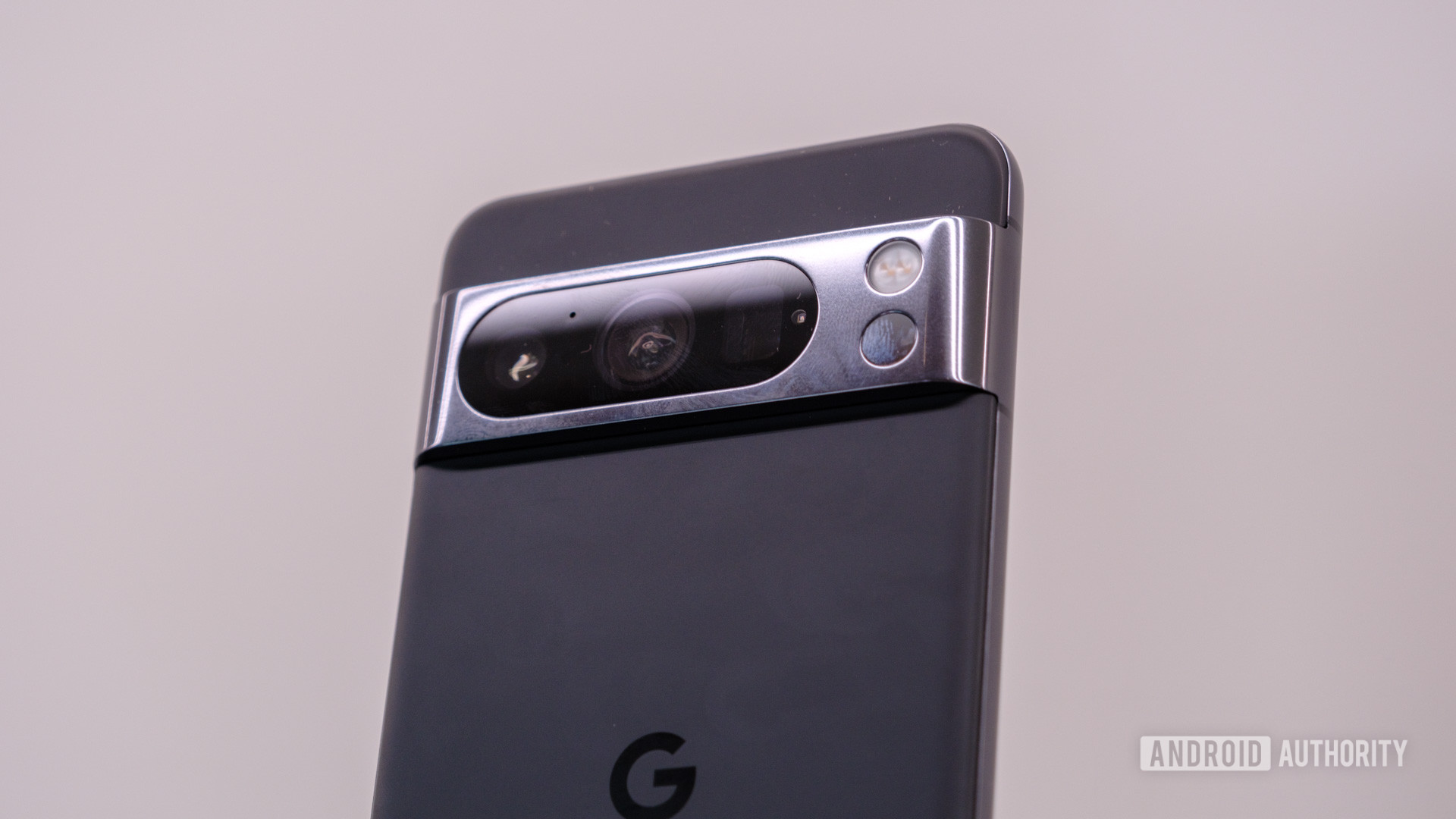
The Pixel series is pretty much synonymous with the best camera phones at this point. Each year, Google impresses us with the capabilities of its phones as computational photography powerhouses. Since we have some significant hardware upgrades, we saw exemplary photography and videography results from the Pixel 8 and Pixel 8 Pro.
Let’s start with the Pixel 8. This phone has an improved 50MP primary sensor, one-upping the iPhone 15, at least on paper. It has a slightly wider aperture (ƒ/1.68 on the Pixel 8 vs. ƒ/1.9 on the Pixel 7), allowing more light onto the sensor. This can create better, sharper images in good lighting and increase the quality of a low-light shot. Meanwhile, the 12MP ultrawide lens has a wider field of view (FoV), jumping to 125.8 degrees on the Pixel 8 from 114 degrees on the Pixel 7. This means you should be able to get more background in your ultrawide photos without physically moving backward.
Every camera sensor on the Pixel 8 series has been improved when compared to the Pixel 7 series.
The Pixel 8 Pro has the same primary sensor as the Pixel 8. However, its ultrawide lens is significantly more powerful with a 48MP sensor. It also has a wider aperture than 2022’s model while simultaneously having a slightly smaller FoV. The Pixel 8 Pro also has a telephoto lens, which the regular Pixel 8 does not have. The telephoto lens is a decent upgrade over the Pixel 7 Pro’s telephoto, with a much wider aperture (ƒ/2.8 on the Pixel 8 Pro vs. ƒ/3.5 on the Pixel 7 Pro). It is also still capable of 5x optical zoom, notably besting the iPhone 15 Pro in this vital area. In practice, we noticed a sizeable difference between the 2022 and 2023 Pro phones in our photo results comparison for the Pixel 7 Pro and Pixel 8 Pro.
On the front, both the Pixel 8 and Pixel 8 Pro have an upgraded 10.5MP selfie camera. You probably won’t see too much of a quality difference here when compared to 2022, though. However, the selfie camera has a very notable new capability: Class 3 biometrics. This means that Face Unlock on these two phones will be of the same security class as fingerprint scans, allowing you to use Face Unlock for bank apps, NFC payments, etc. No Pixel phones have been capable of this since the Pixel 4, and this is the first Pixel phone ever that has both Class 3 Face Unlock and a fingerprint scanner, giving users the best of both worlds.
Finally, one of the coolest additions to the Pixel 8 series is support for professional controls within the camera app. This appears on the Google Pixel 8 Pro only. It’s possible the Pixel 7 Pro could get this feature in a later update, but Google didn’t promise as much. Pro controls will definitely not come to the Pixel 8 or other non-Pro Pixels, though.
Performance
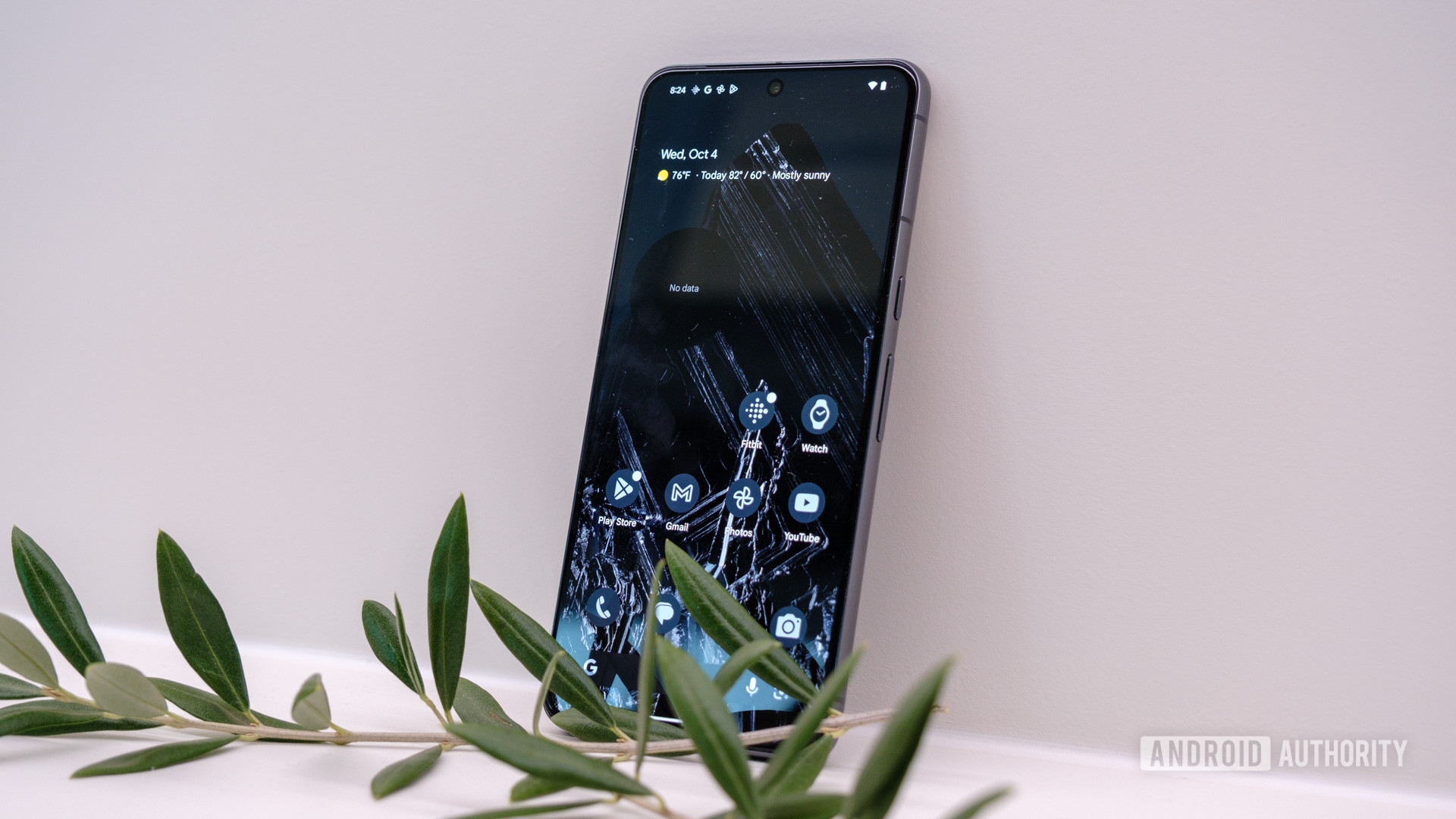
The Pixel 8 series is the debut of Tensor G3. Every major subsystem of the Tensor G3 has been updated when compared to the Tensor G2, which debuted with the Pixel 7 series in 2022. That means we have a next-gen ARM CPU, a more performant GPU, new image sensor capabilities, and a next-gen TPU.
As with previous Tensor chipsets, Google designed it, and Samsung made it. The underlying architecture of Tensor chips is based on Samsung’s Exynos chips. This means Tensor G3 should be on a flagship level but does not exceed or even equal the Qualcomm Snapdragon 8 Gen 2, the Apple A17 Pro, or the Snapdragon 8 Gen 3, at least regarding raw performance.
Meanwhile, the Pixel 8 series has the same RAM and storage configurations as in 2022. That means 8GB of RAM for the Pixel 8 and 12GB for the Pixel 8 Pro. Both phones also start with 128GB of UFS 3.1 storage at the entry level. Interestingly, for the first time, Google is offering a 1TB variant of the Google Pixel 8 Pro. This is only available in the United States, though. The US and everywhere else in the world can choose between 128GB or 256GB for the Pixel 8 and 128, 256, or 512GB of storage for the Pixel 8 Pro. As usual, storage is not expandable on the Pixel 8 series, so be sure to get the model with the most storage you can afford.
Screen quality and size
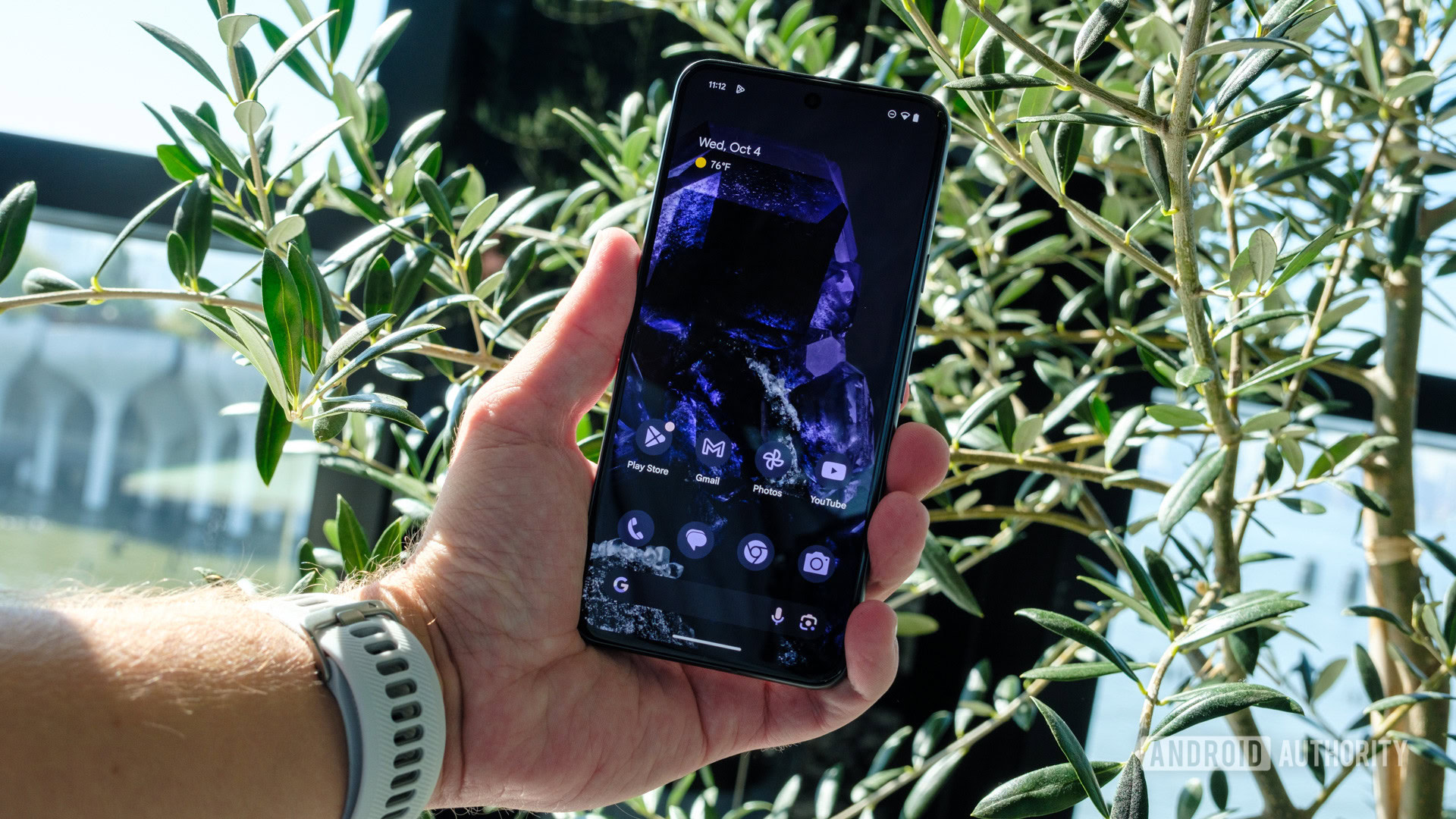
There are numerous display upgrades for both the Pixel 8 and Pixel 8 Pro. Without a doubt, these are the best displays we’ve ever seen on a Pixel.
Let’s start with the Pixel 8. Its display has a higher pixel density than in 2022 at 428ppi. This is mostly due to the display size being slightly smaller at 6.2 inches compared to the 6.3-inch display on the Pixel 7. The display is also significantly brighter, with a peak brightness of 2,000 nits. It also has a faster peak refresh rate, capable of going up to 120Hz. That beats the 90Hz limit of the Pixel 7. However, note that it is not an LTPO display, which means the lowest it can go is 60Hz. The Pixel 8 also has the same display resolution as the Pixel 7, which is 2,400 x 1,080. Gorilla Glass Victus protects the display, offering a high level of durability. Nevertheless, consider slapping on a Pixel 8 screen protector to protect your device.
The Pixel 8 Pro ups the ante in multiple areas. It has a 6.7-inch LTPO panel, which means it can go as low as 1Hz or as high as 120Hz with multiple stops in between. It’s much, much brighter, with a peak brightness of an astounding 2,400 nits, making it over 37% brighter than the Pixel 7 Pro. Interestingly, it has a lower resolution and lower pixel density than the Pixel 7 Pro, but it is unlikely the naked eye would notice the difference. The display is covered by Gorilla Glass Victus 2, which is Corning’s most robust glass for mobile phones. Again, a screen protector is a must to keep that Victus 2 sheath fresh.
Design, colors, and build quality
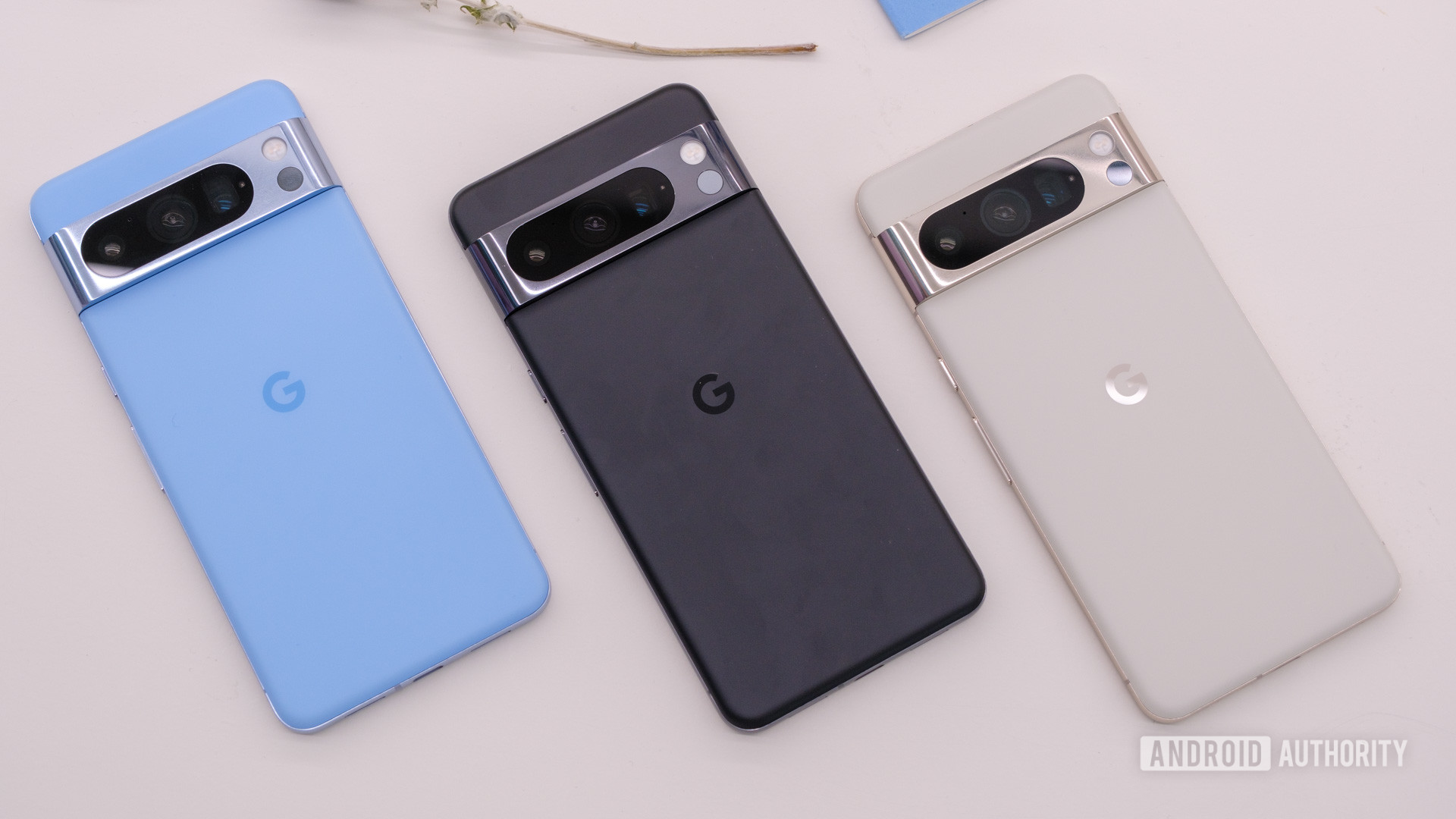
The overall design of the Pixel 8 series is not too far off from the Pixel 7 series. Both phones have Google’s distinctive camera bar on the back and a centered selfie cutout on the front. Even the metal chassis of both devices has the same design, with polished aluminum for the Pixel 8 Pro and unpolished aluminum for the Pixel 8.
There are a few notable differences between 2023 and 2022, though. The Pixel 8 is physically smaller than the Pixel 7. At 150.5 x 70.8 x 8.9mm, it’s significantly less tall and less wide than the Pixel 7, although it is slightly thicker. This drop in dimensions also makes the Pixel 8 a good 10g lighter than the Pixel 7.
The Pixel 8 is smaller than the Pixel 7 by a wide margin while the Pixel 8 Pro sports a flat display for the first time.
There are more significant changes for the Pixel 8 Pro. For the first time ever, it has a flat display. This means there is no curved display option in the Pixel 8 family. The camera bar also gets a redesign, casing the rear camera lenses in one long “pill,” a big departure from the “pill + circle” design of the Pixel 7 Pro. Its overall dimensions and weight are still pretty much the same as the Pixel 7 Pro, though, so if you liked the size/weight of that phone, you’ll love this one.
Build quality is roughly the same in 2023 as in 2022. Both phones have an IP68 rating against dust and water and have strong glass on the front and back (Gorilla Glass Victus for the Pixel 8 and Victus 2 for the Pixel 8 Pro).
When it comes to colors, you have three choices for each model. The Pixel 8 comes in Obsidian (black/dark gray), Haze (light gray/greenish), and Rose (pink). Meanwhile, the Pixel 8 Pro comes in Obsidian, Porcelain (off-white), and Bay (light blue).
Battery life and charging speed
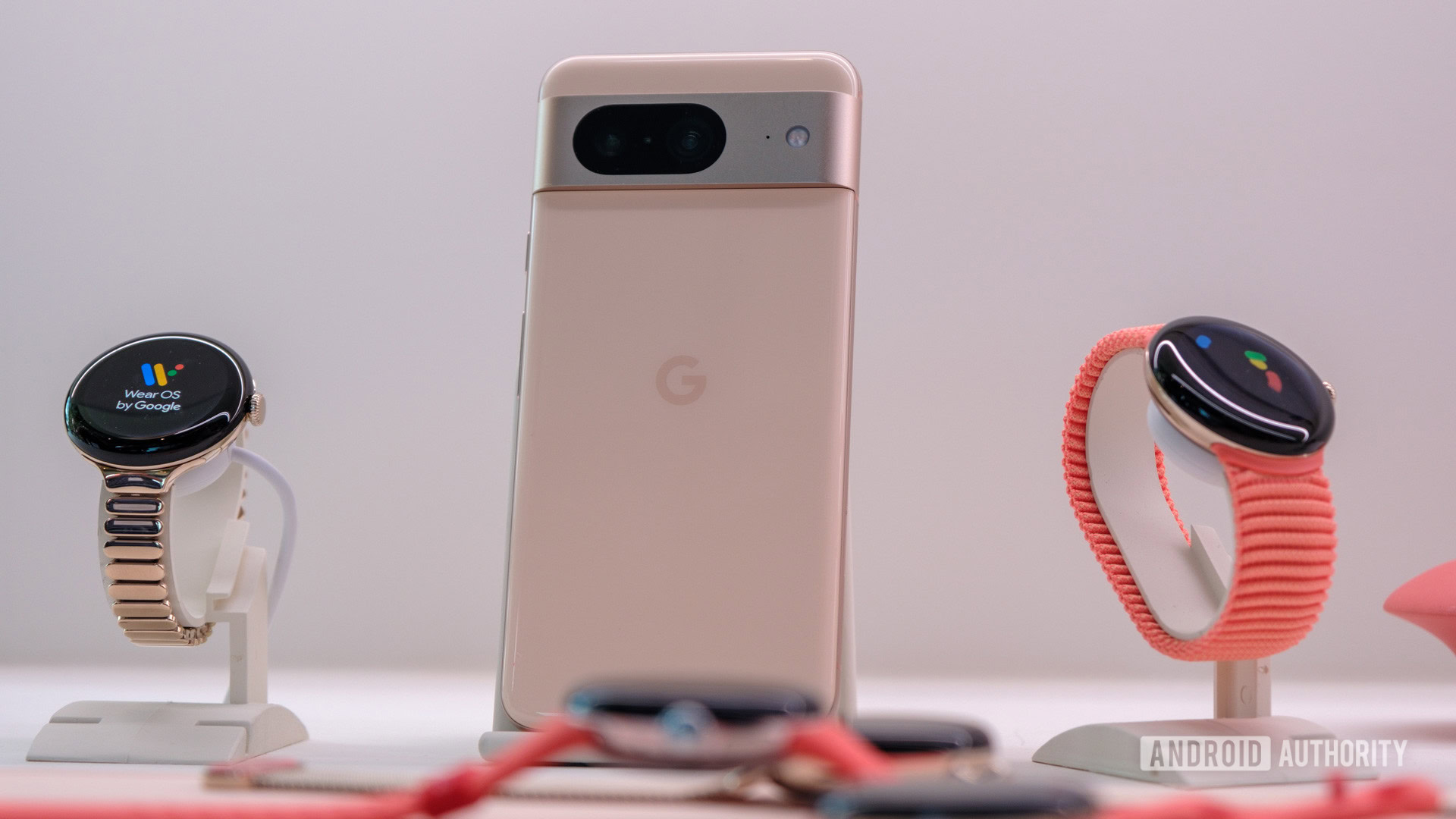
Thankfully, the Pixel 8 and Pixel 8 Pro have better power specs than previous models. It’s unlikely you’ll see much of a real-life difference in how these changes will affect overall battery life, but they certainly can’t hurt.
As usual, let’s start with the Pixel 8. It has a typical battery capacity that’s roughly 5% larger than the Pixel 7’s at 4,575mAh. You can also charge that battery faster with a cable at 27W, a decent upgrade over the 20W speed of the Pixel 7.
On the other hand, the Pixel 8 Pro has a typical battery capacity of 5,050mAh, a mere 50mAh more than the Pixel 7 Pro. However, it has a higher wired charging power of 27W, about 17% more than the 23W capability of the Pixel 7 Pro.
What about wireless charging? Both phones allow for wireless charging at 12W with any Qi-compatible wireless charger. If you decide to use the second-gen Pixel Stand, you’ll get different speeds, though. The Pixel 8 charges wirelessly at 18W on the Pixel Stand, and the Pixel 8 Pro charges wirelessly at 23W on the same. Interestingly, the Pixel 8 Pro’s speed here is the same as the Pixel 7 Pro, but the Pixel 8’s speed is actually 2W slower than the Pixel 7’s. We’re not sure what happened here.
Both phones are also capable of reverse wireless charging, so you can “leech” power from the phone to charge something else, such as true wireless earbuds. Neither the Pixel 8 nor Pixel 8 Pro come with a wall adapter in the box, but you will get a USB-C to USB-C cable you can hook up to a charger you already own. Just ensure the charger supports USB Power Delivery at 30W or more to get the advertised charging speeds. There are some great Google Pixel 8 chargers readily available.
Software and updates
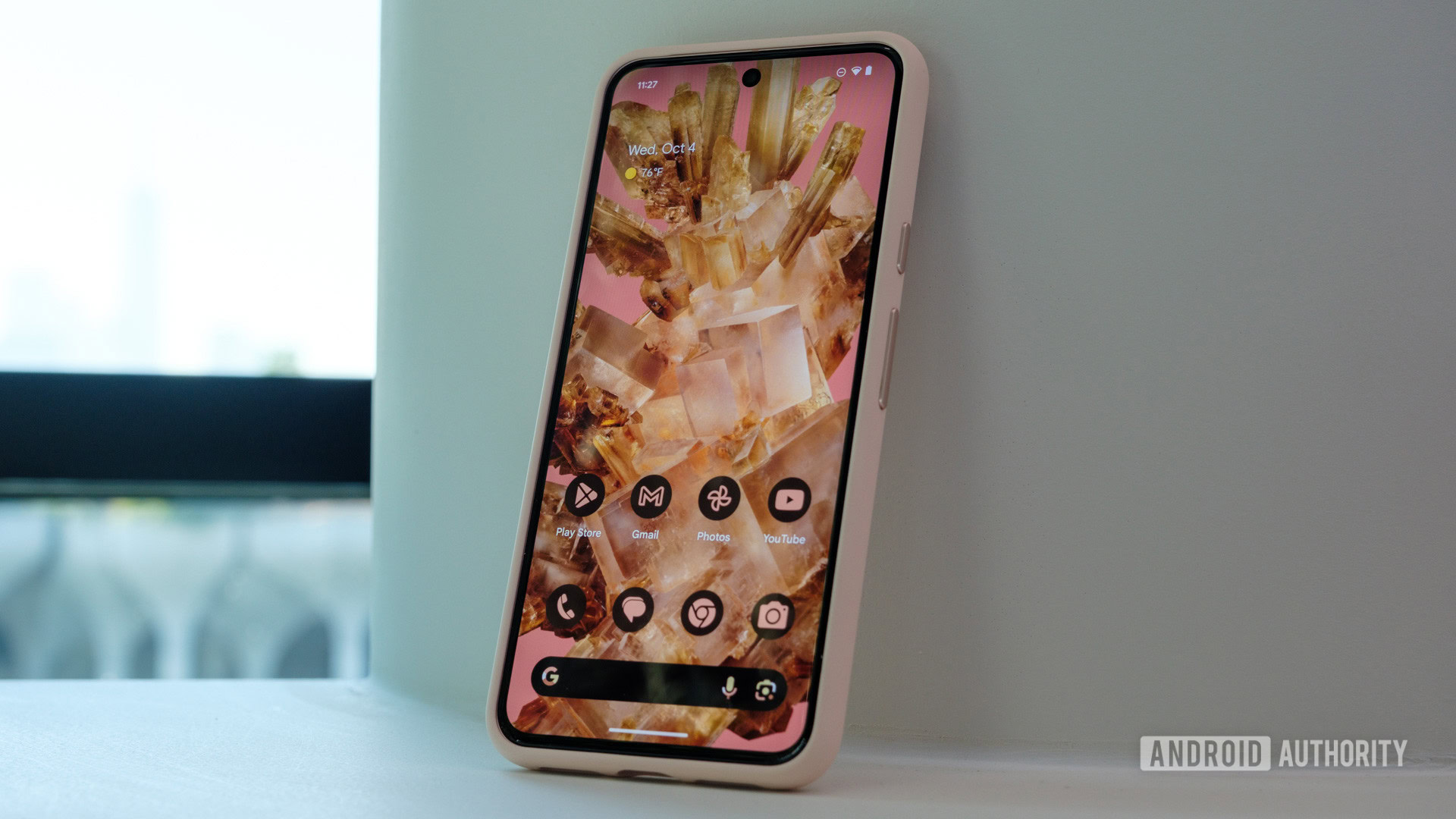
Software updates are probably the most exciting news surrounding the latest Pixel phones. For the first time ever, Google’s software commitment for Pixel phones has increased to a whopping seven years. Those seven years will cover seven Android upgrades, 84 monthly security patches, and 28 quarterly Pixel Feature Drops. This is, by far, the best update commitment in the Android world from any major manufacturer beyond Samsung and its Galaxy S24 series‘ pledge. The only company with a stated policy longer than this is Fairphone, and even then, that company only commits to five Android upgrades and does not offer something equivalent to Pixel Feature Drops. Notably, Google is also providing seven years of spare parts for the smartphones, too.
To put this into perspective, the Pixel 8 series launches with Android 14 out of the box and will get continuous support from Google until the launch of Android 21, which will likely land in 2030. If you’ve ever complained about how Android phones don’t get support as long as iPhones do, the Google Pixel 8 series is now the answer to your prayers.
Unbelievably, the Pixel 8 series will get a full seven years of software support, including seven Android upgrades.
As usual, the latest Pixels also come with new software features. One of these is called Best Take, which captures multiple photographs and then combines them in such a way that everyone’s face looks OK. In other words, if you have one photo where Person A has their eyes closed and then another where they are open, but now Person B’s eyes are closed, the software will automatically edit these together to create one in which Person A and Person B look their best. Magic Editor is another new imaging feature that uses generative AI to reposition, resize, and completely reimagine a photo after it’s shot. There’s also Real Tone and Night Sight for videos now, along with Audio Magic Eraser (which does exactly what you think it does for video clips).
Notably, the Pixel 8 Pro gets some exclusive features. We already talked about how it gets Pro controls for photos. But it also gets a new feature for videos called Video Boost. This brings the computational photography smarts we enjoy with photos to videos for the first time. There is a big caveat here, though, which is that it requires cloud computing. This means you’ll need a data connection for Video Boost to work. It will take some time for you to upload your video, have it processed, and then download it again. Because of this limitation, you’ll need to choose which videos you want to use Video Boost on — it will not be on by default.
Google is also reserving key AI features for the Pro model. As confirmed by a Google engineer in March 2024, Gemini Nano will not come to the Pixel 8 due to “some hardware limitations.” If you want access to Google’s smallest AI model, explicitly designed to run locally on mobile devices, you’ll need to cough up for the Pro model.
There are also some new Google Assistant features coming to the Pixel 8 series. Assistant will be able to summarize web pages, read text aloud while automatically translating it, and offer better proofreading when using Gboard. Call Screen is also better at filtering out spam calls.
In January 2024, the Pixel 8 series gained several features that first launched on the Galaxy S24 series. This includes Circle to Search, which lets users long press the home button and circle content on the screen to prompt a contextual search. Magic Compose, a feature baked into Google Messages that lets users write drafted messages in various styles, is also available.
The Pixel 8 Pro’s temperature sensor
On the back of the Pixel 8 Pro is a new sensor that you won’t find on any other older Pixel (including the Pixel 8) or any of its alternatives. This is a temperature sensor. So far, it is designed to measure the temperature of objects. For example, you could point the detector at a cup of tea and find out just how hot it is.
Early in the rumor cycle, we saw a leaked video showing a person using this sensor to take their own temperature for medical reasons. While this ability wasn’t activated at launch, the temperature sensor gained FDA apprival in January 2024. This now allows users to employ the sensor to take medical-grade body temperature readings, which can be displayed in the Fitbit stats for the day. While it’s a nifty feature, as we mentioned in our Pixel 8 Pro review, we can’t think of many reasons why people would do this, or at least do this often enough to be useful.
FAQ
No, the Pixel 8 and Pixel 8 Pro do not have microSD card slots. This is something Pixel phones have lacked for a long time.
Both the Pixel 8 and Pixel 8 Pro have IP68 ratings. This makes them submersible in water of up to 1.5m for up to 30 minutes.
No, this is something that mainline Pixels haven’t had for years. You’ll need to use wireless Bluetooth headphones or USB-C wired headphones with any Pixel 8 phone.
Yes! Both the Google Pixel 8 and Pixel 8 Pro support Qi wireless charging at a speed of 12W.
Yes, both the Pixel 8 and Pixel 8 Pro support 5G. However, only specific models come with mmWave 5G. Check the specs table on this page to see which model numbers support mmWave 5G in your country.
Yes, the Pixel 8 and Pixel 8 Pro have physical SIM card slots. They also both support eSIM, making them both dual-SIM phones.